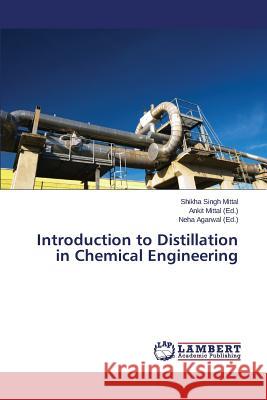Introduction to Distillation in Chemical Engineering » książka
Introduction to Distillation in Chemical Engineering
ISBN-13: 9783659712944 / Angielski / Miękka / 2015 / 112 str.
This book investigates the effect of tray spacing on the dimensions, head losses and flooding tendencies in a sieve - tray distillation column. The system under consideration was chosen to be a 50:50 mole % mixture of methanol and water at its boiling point. The saturated liquid feed is separated into products streams of 99.5 mole % purity. For a given sieve tray (holes arranged in a triangular pitch) with fixed specifications of hole diameter, pitch, tray thickness, weir height and proportion of downcomer area, the variables were determined for values of tray spacing ranging from 0.5 feet (6") to 2.5 feet (30"). McCabe Thiele method was employed for the calculation of number of trays and minimum and optimum reflux ratios, while Fair's correlation, Zuiderweg's model (1982) and Francis equation were used to evaluate the column diameter and head losses, respectively. The results indicate that despite a decrease in column diameter with increase in tray spacing, the volume of the column as well as the head losses increase and among the head losses, tray spacing had a more pronounced effect on the dry plate head loss than the clear liquid head loss.
This book investigates the effect of tray spacing on the dimensions, head losses and flooding tendencies in a sieve - tray distillation column. The system under consideration was chosen to be a 50:50 mole % mixture of methanol and water at its boiling point. The saturated liquid feed is separated into products streams of 99.5 mole % purity. For a given sieve tray (holes arranged in a triangular pitch) with fixed specifications of hole diameter, pitch, tray thickness, weir height and proportion of downcomer area, the variables were determined for values of tray spacing ranging from 0.5 feet (6") to 2.5 feet (30"). McCabe Thiele method was employed for the calculation of number of trays and minimum and optimum reflux ratios, while Fairs correlation, Zuiderwegs model (1982) and Francis equation were used to evaluate the column diameter and head losses, respectively. The results indicate that despite a decrease in column diameter with increase in tray spacing, the volume of the column as well as the head losses increase and among the head losses, tray spacing had a more pronounced effect on the dry plate head loss than the clear liquid head loss.











